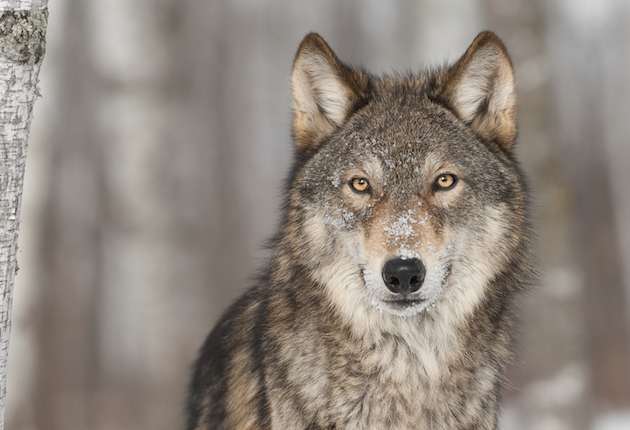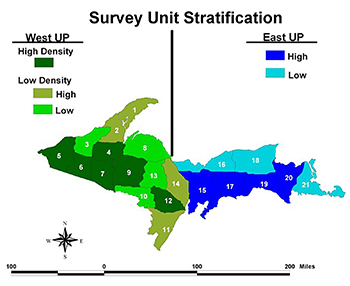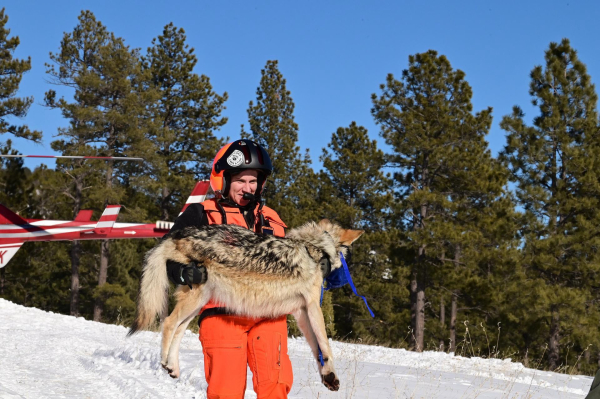There’s always an element of danger present when bear hunting with dogs, but it’s expected to come from the bear. Not so in Wisconsin, as many bear hunters have found out the hard way this year. Wisconsin’s Department of Natural Resources is warning hunters to be on the alert as the year comes to a close, a result of more than 30 wolf attacks on bear dogs already in 2016.
As of press time, there have been 28 reported dog killings in America’s Dairyland this year, with the first coming in March. Two more followed in April, but the three kills were followed by a lull as the spring gave way to summer. Then in July another 11 dogs were killed by wolves as hunters began running their dogs ahead of the September bear opener.
Five dogs have also been injured by wolves, some individually and some as part of an attack that left other dogs dead.
“A certain amount of it is circumstantial,” David Ruid, a wildlife biologist with the USDA’s Wildlife Services, told the Duluth News Tribune. “But, generally speaking, it’s typically larger packs that have reproduced that are protecting pups.”
Today marks the start of the bear-hunting-with-dogs season in Wisconsin, which could lead to a spike in attacks as more dogs enter the woods. Dogs can be used to hunt bears from Sept. 14 to Oct. 11 in three of the state’s four hunting zones.
Wisconsin’s DNR is building a database for hunters to use as they plan their time afield. The date, location, and type of dog attacked has been listed for each incident, with hunters able to view the details and plan their hunting areas accordingly. Hunters can sign up for alerts from the DNR when and if new wolf attacks occur, further aiding them in keeping their dogs safe.
“That said, there are new areas where these conflicts can occur,” Dave MacFarland, the DNR’s large carnivore specialist, told Duluth. “So even with the information that we provide, individuals can experience conflicts in places where they haven’t occurred before.”
While no amount of money can replace the time, effort, and emotion invested in a dog, Wisconsin has come up with a figure that at least tries to offer solace. Hunters who lose their dogs to wolves are able to receive as much as $2,500 per animal. Wisconsin is said to be the only state in the Union that offers such a program.
In typical anti-hunter fashion, crusaders have used the payouts to call for the end of bear hunting altogether. Why should hunters be recompensed for their losses when they are participating in an “evil and cruel” sport? Why does Wisconsin even allow bear hounding in the first place? “Real” hunters don’t need dogs, as shooting a treed bear isn’t much of a challenge. The arguments continue ad nauseam.
Wolves have been a polarizing issue across the United States for decades, perhaps nowhere more so than in Wisconsin. It has repeatedly attempted to delist wolves from the state and federal Endangered Species Lists, each ultimately meeting with failure after protracted legal battles. Wolves were state delisted in 2004 and were federally delisted in 2012 after five years of legal debate. However, a federal court relisted the wolves in 2014.
The DNR created its first Wolf Recovery Plan in 1989 after having studied wolves within the state’s borders since 1979. The plan originally called for a management goal of 80 wolves, which was reached by the close of 1995. In 1999 the wolves were reclassified as threatened in Wisconsin, with a new management plan approved—250 wolves as the threshold for state delisting and 350 for the management goal.
As of the winter survey of 2011, Wisconsin held some 800 wolves, with roughly 200 packs and 19 loners. Each pack covers a territory of 20 to 120 square miles.
Officials, using Geographic Information System (GIS) mapping, estimate northern Wisconsin has 6,000 square miles of suitable wolf territory, enough to handle 300-500 wolves. The state as a whole is estimated to have a carrying capacity of 700-1,000 wolves, which, depending on the estimate used, the wolves have either reached or are about to in the near future.

 Hunters are being warned of potential wolf attacks when running dogs this hunting season. (Photo: Holly Kuchera/iStock)
Hunters are being warned of potential wolf attacks when running dogs this hunting season. (Photo: Holly Kuchera/iStock)





